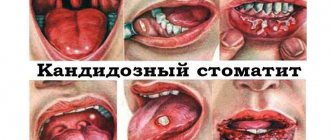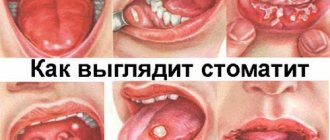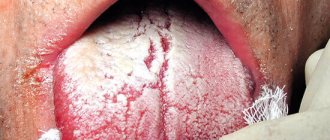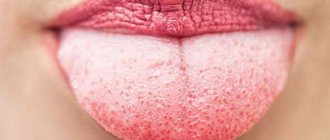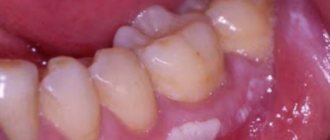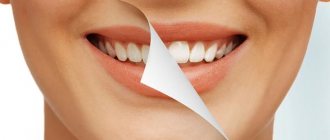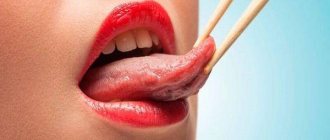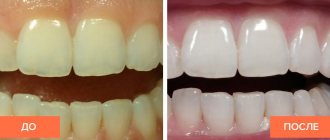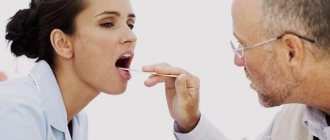Beli: reasons for its appearance
The causes of leucorrhoea can be anything. And if this is not some kind of sexually transmitted disease, the presence of which can only be determined by an experienced gynecologist after a thorough examination, then the cause may even be nervous strain, eating food rich in proteins, or hypothermia.
It is also worth noting that strong leucorrhoea in girls is quite often caused by intestinal bacteria, streptococci, gonococci, anemia, kidney disease and intoxication of the body.
Often this pathological condition in a small child occurs as a result of improper care. After all, young parents sometimes simply don’t know how to wash their baby. As statistics show, such a pathology in girls of primary school age and adolescents occurs precisely in those families where mothers or fathers constantly drink and do not maintain proper cleanliness in the house. In this regard, I would like to say that parents should be very attentive to their daughters. After all, this is the only way you can promptly notice emerging deviations in your girl’s health.
Professional treatment for whiteheads on the face
The choice of home method for getting rid of subcutaneous white pimples on the face depends on the prevalence of the rash, the presence of complications, and weather conditions. There are professional removals on an outpatient basis, in the office of a dermatologist or cosmetologist:
- get rid of acne by mechanical action;
- hardware methods for eliminating large whiteheads on the face;
- homemade recipes for getting rid of milia, pimples, whitish spots.
Doctors recommend eliminating the main causes of the development of white spots, since removal will only temporarily solve the problem - relapse is inevitable.
To effectively fight acne you need to:
- establish a diet, use a diet enriched with vitamins, minerals, and other beneficial nutrients;
- drink enough water every day;
- in order to get rid of the underlying disease for small white acne, contact medical specialists - gastroenterologist, endocrinologist, gynecologist, dermatologist;
- observe daily home hygiene rituals for white rashes - wash your face in the morning, in the evening before bed;
- choose cosmetics for your skin type.
Need advice from an experienced doctor?
Get a doctor's consultation online. Ask your question right now.
Ask a free question
There are several ways to professionally get rid of milia on the face:
- Mechanical or combined cleaning. The cosmetic effect lasts 2-4 months, depending on skin type, the presence of basal metabolic disorders or hormonal imbalance. The procedure consists of squeezing out subcutaneous acne using special sterile instruments. The skin must first be steamed over a steam bath or using special lotions. Apply a leavening cream for easier, painless removal of whiteheads. A person may feel slight discomfort and pain when the surface of the pimple is pierced with a needle. Finally, the surface of the face is disinfected and wound healing agents are applied.
- Chemical peeling of the face with the application of acids to stimulate recovery, renew the epidermal layer and completely remove whiteheads from the face. It is recommended to complete a course of 5 procedures, with an interval of 1-2 months for effective relief.
- The doctor may prescribe medications to treat the underlying disease at home and local medications for white rash - creams with antibacterial, drying, anti-inflammatory effects: ichthyol ointment, Sintomycin, Sudocrem. Cosmetologists recommend using masks, one of the ingredients of which is almond or fruit acid. They help get rid of keratinized epithelium, milia on the face disappear on their own.
- Galvanization, ultrasonic removal. Impact on the skin using a low voltage current with a special tube to soften and rid the face of large whiteheads.
It is recommended to plan cosmetic procedures in the spring and autumn. The burning sun or frost can worsen the healing process after acne removal, restoration, and provoke the appearance of new milia.
After the manipulations, the cosmetologist will help you choose home care for the skin in order to prevent the recurrence of rashes on the face.
Normal discharge
Before getting rid of leucorrhoea with the help of an experienced specialist, it is recommended to find out what caused it. If you experience the symptoms described below, then there is nothing to worry about, because very soon the discharge will go away on its own. So, you can postpone a trip to the gynecologist if you have:
- there is not very heavy discharge;
- leucorrhoea transparent or slightly cloudy;
- the discharge is not accompanied by a sharp and unpleasant odor;
- There is no discomfort in the lower abdomen.
In this situation, the appearance of mucus on underwear is a completely normal process. At the same time, girls are recommended to wash themselves with warm water more often and change hygiene products.
How to save upholstered furniture from stains
Get rid of fresh stains on the sofa immediately
Cleaning upholstered furniture has its own characteristics. The selection of cleaning products is carried out individually using the “scientific poke” method. Remove fresh stains immediately. To do this, follow the following procedure.
- Rub the stained area with a microfiber cloth soaked in vinegar.
- Wipe the upholstery carefully with a small amount of soapy water.
- Leave the furniture to dry with the windows and balcony open, or use a hairdryer on low setting.
Removing stains from upholstered furniture
Grease stains on the upholstery of upholstered furniture are removed with any good absorbent - salt, soda, chalk or starch:
- blot the oily area with napkins;
- sprinkle the absorbent onto the stain and leave it to absorb the grease for several hours;
- remove the powder with a vacuum cleaner.
- if necessary, repeat the previous steps.
- rub a small amount of dishwashing detergent on a cloth and blot with a damp cloth.
- dry the furniture.
Liquid dishwashing detergent can be used to remove greasy stains
Leather upholstery has different requirements. Use a steam cleaning method, avoid direct contact of the upholstery surface with water. Use wax-based cleaners - they create a protective layer and prevent cracks from occurring.
Abnormal discharge
Unfortunately, most women or girls who experience this deviation are diagnosed with some kind of disease during a medical examination. This can include problems with the genitourinary system and intestines. It should be noted that all these diseases are extremely dangerous for a woman’s health and her reproductive functions. In this regard, it is recommended to visit a doctor. However, you should only do this if you:
- heavy discharge is observed;
- leucorrhoea yellowish or even brown;
- the discharge smells strongly and unpleasantly (usually “rotten fish”);
- constant pulling and pain in the lower abdomen;
- there is frequent urination.
These symptoms indicate the presence of serious abnormalities in a woman’s body. To prevent possible consequences, such representatives of the fairer sex should definitely visit a gynecologist, urologist or gastroenterologist.
Method 2 of 2:
Using Other Tools
Step 1
Create a duplicate of your image. Let's say you have a picture of an elephant in the desert. Your goal is in Photoshop CS6 how to remove the background so that you can add a new background behind the elephant, but the quick selection tools may affect parts of the elephant itself. Luckily, you have several other tools at your disposal to handle tricky areas.
How to Remove a Person from a Photo with a Complex Background in Photoshop
Step 2
Use the Lasso tool to capture small areas that need to be processed manually. The Lasso Tool follows the mouse, making a selection once you've completely closed the selection path. Although this tool is difficult to use on large images, it is a great way to get a precise selection.
Enlarge the image, then use Ctrl/Cmd-click to add small sections or Alt/Opt-click to remove sections:
Step 3
Use Color Range to remove most of the solid-colored areas from the background. This tool selects large areas of similar color, such as grass, sky or wall. But if the image you want to save has a color close to the background, this method will not work.
To use it, you need to do the following:
- click on “Selection” in the top menu;
- select "Color Range";
- use the eyedropper to select which color you want to highlight. You can also specify specific colors by selecting them from the Select: By Swatches menu.
Enhance Landscape Photos Using Photoshop
Step 4
Use the Pen tool to make neat, precise selections around objects. The Pen tool is the simplest and most powerful selection tool. However, it takes time to master it. Just click around the image to add dots and the program will connect them. Click and hold the Pen tool in the toolbar and select Freestyle Pen for Curves from the drop-down list. Once you're done, right-click on the line and select Select Area.
This will turn your line into a selection, which you can then extract before removing the background in Photoshop.
- If you make a mistake with a point, Ctrl/Cmd-click to correct it later;
- The Alt/Opt-Click combination removes a point from the line;
- Pressing the Shift key draws a perfectly straight horizontal or vertical line from your last point.
How to get rid of leucorrhoea?
If you have been bothered by such unpleasant and painful discharge for a long time, you should immediately consult a doctor. After a personal examination, the doctor is obliged to refer his patient for examination. After all, only test results can help him make the correct diagnosis. Based on them, the doctor is obliged to prescribe medications (usually antibacterial), and also, if necessary, prescribe physiotherapy, douching and give some advice on maintaining personal hygiene. If leucorrhoea appears as a result of a disease of any particular organ, then the doctor should recommend remedies that can cure this particular affected area.
Ways to deal with white spots on the face
Milia rarely require serious intervention under medical supervision. In most cases, they can be dealt with using salon cosmetic procedures, and if you are lucky, using home methods. But immediately prepare yourself for long, painstaking work: persistent small white dots on the face do not easily give up their positions.
Masks for whiteheads on the face
Folk remedies can cope with clearings on the face only at the very early stage, when white tubercles-capsules have already appeared, but have not yet had time to grow and “fix” in the skin. Otherwise, home recipes can only be considered as auxiliary measures for salon procedures.
Effective masks for removing whiteheads on the face:
- Cosmetic clay . Dilute 1 tbsp. l. pharmaceutical clay with boiling water or hot milk so as to obtain a paste reminiscent of sour cream in consistency. Add a few drops of lemon juice. Lubricate cleansed, dry skin in the area of white spots, let the clay dry completely and wash with warm water. Finally, treat your face with a moisturizer or anti-inflammatory cream. It is recommended to use white and blue clay for oily skin, red for normal skin, black for blemish-prone skin, and pink for mature and aging skin. Dry skin, in principle, does not interact well with clay, but if you need to remove small white dots on a face prone to dryness, take green or yellow.
- Egg white . Brush the millet with beaten chicken or quail egg white, renewing the layers as they dry. In total, you need to make from 3 to 5 layers, after which the protein must be washed off and the skin moisturized with cream. Interestingly, some people advise sticking a thin film on the white milia from the inside of the egg and removing it after it has completely dried.
- Gelatin and kefir . 1/2 tsp. gelatin dilute 1 tbsp. l. kefir with a fat content of 2.5%, let it swell and lubricate the problem areas of the face with a thick jelly-like mass. After 15 minutes, wash well and use cream. In addition, it doesn’t hurt to make daily lotions from sour milk, kefir or yogurt, simply soaking cotton pads in one of these drinks and applying them to pimples.
- Yeast and peroxide . Mash 1/4 pack of “live” yeast with a fork and pour in 1 tbsp. l. 3% hydrogen peroxide and 1 tbsp. l. lemon juice. Lubricate the milia with the resulting paste, leave the mask for 20 minutes and rinse with warm water. Treat your face with cream. It is important to apply the mixture quickly until it stops bubbling, since the mask helps remove white spots on the face precisely in the active phase, when peroxide enhances the action of yeast and increases the permeability of the epidermis.
- Oatmeal and honey. 1 tbsp. l. combine ground oatmeal with 1 tsp. honey and 2 tsp. lemon juice. Cover white spots with the sweet sticky mixture, avoiding the eye area where it can stretch the skin, leave for 15 minutes and wash with warm water.
- Pumpkin and nettle . To remove milia at home, brew 3 tbsp. l. dry or fresh nettle leaves with boiling water. While the broth is cooling, grate the pumpkin pulp on a fine grater to get 2 tbsp. l. mush. Combine pumpkin shavings with 1 tbsp. l. strained nettle infusion, thicken with a small amount of oatmeal or rice flour and apply to problem areas of the face. After 30 minutes, rinse off the mask and rinse your face with the remaining nettle infusion.
- Herbs . To get rid of milia, pour 1 tbsp into a thermos. l. dried chamomile and calendula flowers. Pour 150 ml of boiling water and leave to steep for 2-3 hours. In the evening, cleanse your skin of cosmetics and daytime dust, soak a linen napkin in the infusion and apply it to your face, or use the infusion for spot applications using cotton pads. It is worth continuing this useful practice even after you have cleared your face of whiteheads - as a preventive measure for new blemishes and to improve the overall condition of the skin.
Note! Folk remedies are considered relatively safe, but do not forget that they can cause an allergic reaction. If this is your first time dealing with any of the components of a hand-mixed mask, be sure to test it on your wrist or elbow and see how the skin reacts. This way you will protect yourself from possible troubles.
Mechanical removal of whiteheads on the face
Women who have been fighting a long-standing battle with comedones and acne are probably familiar with such an object as a Vidal needle (loop, spoon). In shape, it resembles a stick, one end of which is pointed, and the other is equipped with a metal loop or a concave plate with a hole. Skillfully using one end or the other, experienced young ladies remove sebaceous plugs of various types from under the skin.
However, milia present a much more difficult task for an incompetent cosmetologist than ordinary blackheads and acne, and the risk of infection when trying to remove them is higher. If you do not have serious experience in this area, it is better to entrust the cleaning to a professional cosmetologist who knows exactly how to remove whiteheads on the face without damaging the skin.
Pros of the procedure:
- simplicity;
- cheapness.
Minuses:
- soreness;
- duration - if there are a lot of spots, 2 or more sessions may be required;
- risk of infection.
How to remove whiteheads on the face using a Vidal needle:
- Remove makeup, cleanse skin with lotion.
- Disinfect the needle and hands.
- Wipe the grass intended for removal with a cotton swab moistened with a disinfectant - alcohol, Chlorhexidine, etc.
- Pressing the skin around the pimple with the fingers of your left hand (if you are right-handed), carefully pierce it over the pimple with your right hand. As you know, milia do not have access to the surface, so you need to create it extremely delicately.
- Turn the needle over and press it with a loop or “spoon” to your face so that the millet falls into the hole.
- Press the instrument onto the skin, squeezing the millet capsule into the puncture.
- Wipe the area again with a cotton swab and disinfectant.
Let us repeat: despite its apparent simplicity, you should not undertake the removal of milia if this is the first time in your life that you hold a Vidal needle in your hands. Inflammation can result in much more unsightly marks for you than a small grass seed.
Drugs for the treatment of discharge
Currently, quite a large number of representatives of the fair sex regularly suffer from diseases of the genitourinary system and internal female organs. The first signs of both diseases are leucorrhoea (in women). Treatment of this pathological condition is based on taking antimicrobial drugs (Metranidazole, Trichopolum, etc.). In addition, various solutions for external use are often used to treat leucorrhoea (Rivanol, Furacilin, hydrogen peroxide, Lysozyme, etc.). If for some reason the disease cannot be treated, the doctor will additionally prescribe antibiotics in the form of all kinds of tablets, hormonal drugs, suppositories, etc. (“Amoxicillin”, “Fosfomycin”, “Nitrofurantoin”, etc.). Often, to treat such a deviation, physical therapy (UVR) is used, and a course of Nystatin tablets is also administered, which is aimed at combating yeast-like fungi of the genus Candida.
Beli
Normal leucorrhoea is a moderate discharge of transparent white color with cloudy streaks.
Discharge white mucus
Mucusy white discharge
This consistency of mucus is caused by exfoliated epithelial particles. They do not smell and do not cause any unpleasant sensations.
If leucorrhoea acquires a gray, yellow tint, a cheesy character or inclusions of flakes, an unpleasant odor, and is accompanied by vaginal burning and itching, then this indicates pathology.
Bacterial vaginosis
The main symptom is vaginal discharge with the smell of rotten fish, combined with genital itching. This infectious disease is transmitted both sexually and develops in connection with a disruption of the biocenosis, when pathogenic bacteria begin to grow and prevail over lactobacilli. A distinctive feature of vaginosis is an increase in symptoms after sex.
Discharge with flakes Purulent vaginal discharge
Treatment of vaginal discharge caused by vaginosis occurs at the local level. For this purpose, antibacterial (Terzhinan, Flagyl), antiseptic (Makmiror), antibiotic (Clindamycin) agents are used in the form of suppositories or douches. In 50% of patients, relapses occur due to weakened immunity, therefore, along with local drugs, immunostimulating and restorative drugs are prescribed.
Candidiasis
Leucorrhoea, which has a curd consistency and a sour smell, along with which there is a constant itching in the vagina, a burning sensation when urinating - a sign of thrush (Candidiasis), caused by fungi of the Candida family.
Secretion from thrush Vaginal discharge from Candidiasis
Many women are concerned about how to treat this white discharge. The achievements of modern medicine make it possible to get rid of them with the help of one suppository (Futsis) or several (Nystatin, Pimafucin, Livarol). Thrush can often reappear, so you need to regularly take preventive measures to avoid relapses.
Practice shows that local drugs for such diseases are much more effective than general and systemic drugs.
Bloody, bloody, and brown discharge streaked with blood
Such discharge always contains blood. If they appear more than one day before menstruation or in the middle of the cycle and are not associated with ovulation, nagging pain is felt in the lower abdomen, then cervical erosion, fibroids, endometriosis, and polyps can make themselves felt.
Ectopic cervix
Treatment of vaginal discharge in women with erosive processes is carried out in a comprehensive manner. Prescribe hormonal, anti-inflammatory, antibacterial, antiviral drugs in combination with local ones. Some cases of this disease require more drastic action in the form of medical intervention. Erosion can be cured using laser, radio wave, electric current, cryodestruction, and chemical coagulation.
Uterine fibroids
There are two methods to get rid of uterine fibroids and accompanying discharge: with the help of medications and surgery. In the latter case, myomectomy and uterine artery embolization are used.
Endometriosis
If the brownish color of the discharge is caused by endometriosis, inflammation of the lining of the uterus or a polyp, cleansing (scraping) is used.
Injuries
It is not uncommon that such discharge is associated with thin vaginal vessels, which are easily injured during rough sex. In this case, treatment of vaginal discharge is carried out using suppositories with a healing and antiseptic effect.
Allergy
The reasons for their appearance are also considered to be: the presence of an allergic irritant (wearing synthetic underwear, using inappropriate intimate hygiene products and lubricants). In case of allergies, it is recommended to eliminate the irritant.
OK
In the first months of using hormonal drugs, the genitals may expel a brown spotting secretion. There is no need to use any therapy, since after 3 months the body adapts and the symptom goes away on its own.
Yellow and green discharge
Green discharge can be rejected by the genitals due to infection or inflammation. All of them are accompanied by vaginal itching, burning, and unpleasant odor.
How to treat yellow discharge in women? Therapy depends on what microorganisms they are caused by.
Mucus with trichomoniasis is abundant and foamy. It is quite difficult to treat this sexually transmitted infection. Even antibiotics are powerless here, so special long-term antiprotozoal medications are used. Such signs can also indicate inflammation of the ovaries (adnexitis) or salpingitis (inflammation of the fallopian tubes). Antibiotics and anti-inflammatory drugs are used in combination with physiotherapy.
Purulent
This mucus smells rotten and is accompanied by pain in the lower abdomen, increased body temperature and general malaise. We are talking about an inflammatory process that can be relieved with antibiotics and anti-inflammatory drugs.
Copious watery mucus with pus implies the presence of sexually transmitted diseases. They are also characterized by frequent and painful urination. This includes chlamydia, gonorrhea and other ailments that are treated with broad-spectrum antibiotics in combination with anti-inflammatory and immunostimulating medications.
Folk remedies
You already know what leucorrhoea is and how to get rid of it using traditional methods. However, I would also like to say that folk remedies are very often used to treat leucorrhoea. Let's introduce some of them:
- Every day for 2-4 weeks you should drink fresh viburnum juice in the amount of 30 ml.
- You should make a decoction of immortelle flowers, and then drink it three times a day, 1 large spoon, which is recommended to be diluted in advance in a glass of water. The course of treatment is 4 weeks.
Stains on solid wood furniture
If a greasy stain appears on the surface of furniture made of solid expensive wood (oak or walnut), do not make a tragedy out of it - there are always a few tricks that will save you money.
It's time to go get some beer or iodine
Prepare a mixture of the following ingredients in a water bath:
- beer – 1 glass;
- sugar – 1 tablespoon;
- furniture wax – 0.02 kg.
Squeeze the slightly cooled mixture from a rag onto the stain. Remove without rubbing. Wait for it to dry and polish with a soft cloth or woolen rag.
Small stains on furniture can be removed with highly diluted iodine. Apply it with a brush or cotton swab and buff once dry.
We paint over stains with iodine, strongly or weakly diluted depending on the color of the furniture
Salt will help you
Sprinkle salt on the countertop where the liquid was spilled.
A stain that appears on the countertop after a spilled liquid can be sprinkled with salt and filled with vegetable oil for two hours. After this, wipe its surface with a damp and then dry cloth. Apply and rub in furniture wax.
If such stains appear on the walls of the cabinet, rub the damage thickly with Vaseline or linseed oil, and remove the excess with a dry soft cloth.
Remove stains on cabinet walls using oil and a dry cloth
Be careful with mahogany furniture
Using vegetable oils to remove stains
To remove white spots from the surface of furniture made of this material, as well as alder, eucalyptus, yew, and cherry, use only refined vegetable oil. This is necessary so that the cleaned area does not become cloudy.
You can also use oil to remove scratches on wood surfaces.
Water, water, water all around
It causes whitish stains that penetrate deep into the varnish coating of furniture. Grind them with wheat flour and polish with vegetable oil. You can also use oil from half a walnut. Rub the slice onto the stain, wait until it dries and clean it with a cloth rag.
Removing a scratch or small stain on wooden furniture using nuts
Got caught red-handed
We create a special mixture for removing stains from drying oil and alcohol
Mix drying oil with alcohol. Rub the stain until it disappears. Wash off any residue with alcohol. For final polishing, use a soft, clean cloth. After such treatment, the surface of the furniture may fade. To restore gloss, use a mixture of denatured alcohol with linseed, mineral or vegetable oil.
How to remove efflorescence from the surface of stone, brick, concrete?
First of all, it is necessary to eliminate the cause of the moisture that the material absorbs.
For this purpose, waterproofing, gutters, and roofs are repaired, but the main protective measure is waterproofing the surface of the stone. Severe efflorescence can be removed with a stiff brush with synthetic bristles.
At the next stage, special cleaners are used. Before choosing a product from a particular manufacturer, be sure to test the effectiveness on a small, inconspicuous area of the surface. Our company at one time made a choice in favor of the Tiprom Plus cleaner. This is a concentrate, which is a mixture of acids with the addition of surfactants, which is diluted with water in a ratio depending on the degree of contamination. The resulting composition is applied to the surface of the stone with a brush, roller or spray. The composition reacts with salts, the white coating “melts” before our eyes. If it is heavily soiled, you will most likely need to treat the surface 2-3 times.
After treatment with the cleaner, a water repellent (impregnation) is applied. Impregnation does not change the air permeability of the material, imparts water-repellent properties, and increases crack resistance. When water gets on the treated material, it rolls off without having time to be absorbed.
There is one important nuance. Some homeowners try to solve the problem with efflorescence by simply applying a wet-effect water repellent. This water repellent simply “paints over” the efflorescence. They remain, but they are not visible. The problem is solved visually. You shouldn't do that. This will not remove the cause of efflorescence, and the situation will worsen every year. Impregnation cannot penetrate deep enough because some of the pores are clogged with salts. Therefore, the degree and duration of protection of the stone from water and dirt is reduced. The negative consequences of the fact that the lion's share of salts dissolved in water remain inside are even worse. When moisture evaporates, the growing crystals rupture the pore walls, causing cracks to form - first in the cladding, and then in the wall, greatly reducing the vapor permeability of the facade. Internal efflorescence (insoluble crystalline hydrates) retains water that continues to penetrate from outside, reducing the thermal insulation of the house. The result: damp, “suffocating” walls, ready to crack, plus a façade disfigured by drips and shots from the cladding.
Efflorescence on stone and brick. Removing efflorescence using cleaners
We have already written about water repellents and the importance of their use in relation to certain types of stone or for specific operating conditions.
We will undoubtedly return to this topic later. The problem of hydrophobization is quite relevant and interesting, and, most likely, will not bypass you. Visit our website often and you will receive the most complete information about water repellents (impregnations) for stone. In the same article we will turn to the issue of efflorescence, which has become a scourge for most facades. Look at the photos:
These white stains on the walls, which do not add aesthetics to the appearance, are efflorescence.
Efflorescence is the deposition of soluble salts on the surface of masonry during the evaporation of water in which these salts are dissolved.
Efflorescence is a mixture of many chemical compounds - carbonate, calcium, sodium, sulfate, potassium, chlorides, metal oxides, etc. Some of them are water-soluble, some are dissolved by acids and alkalis.
